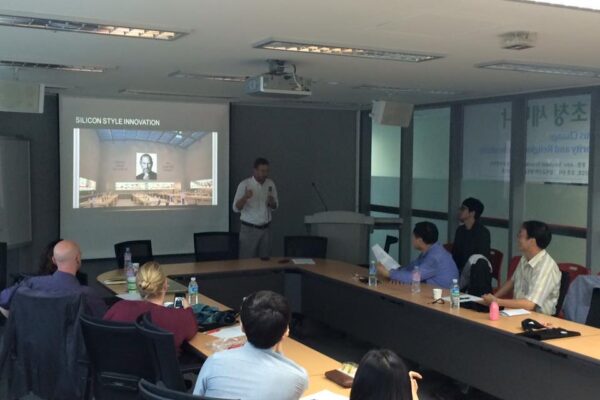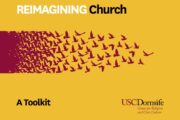The Center for Religion and Civic Culture’s research team traveled to Seoul, South Korea in September and shared their findings about religious competition and creative innovation in Los Angeles with researchers in Seoul. The following is an article published by the Christian Standard, translated from Korean into English.
The Young Generation Seeks Spirituality and Common Good in Religion
by Ji-hye Kim
“I’m a Christian. Yet I am here not because of religious duty, but only to help those in need.” Quoting a volunteer’s words, Nick Street outlined his point about the increase of young Christians who leave churches’ institutionalized boundaries to volunteer and help those in need.
Mr. Street added that these people were altruists “independent of religion,” and were simultaneously advocates of “religious neutralism.” Moreover, he saw that both Christian and non-Christian volunteers shared a common interest that resided in spirituality.
Taking the young population in Los Angeles, for example, Mr. Street claimed that their altruistic efforts such as “Laundry Love” and “Share a Meal, the burrito project,” are their way of achieving the common good.
Mr. Street maintained that these young volunteers pose an issue to Christian churches, who must in turn endeavor to approach the young population who yearn for spiritual experience. Professor Sung Gun Kim further added that there is a similar trend in the United States and Europe, namely the increase of young people who pursue spirituality without being bound by religious confines. Mr. Kim argued that a considerable amount of young population is stepping outside the institutionalized boundaries of church, and that these young people ought to pursue spirituality and the common good even outside church.
The conversation about people’s attention to spirituality continued regarding the topic of the Buddhist meditation organization, “Mindfulness.” Nalika Gajaweera claimed that “mindfulness” meditation, though mostly based on the Buddhist doctrine, has been going through a considerable amount of innovative reinterpretation. She added that many people who desire a spiritual experience, or atheists and areligious people interested in finding their “self” (or “selves”) are subscribing to “mindfulness” meditation.
Ms. Gajaweera further maintained that “mindfulness” meditation can be achieved by leaving the religious aspect out of Buddhism. By further removing themselves from religious institutions and doctrine, people have been using “mindfulness” meditation as a form of refuge and a source of healing.
Having done extensive research of church forms, Andrew Johnson suggested a variety of creative and innovative church groups and the importance of communication among them. Mr. Johnson introduced “network church planting” as an association that transcends church denominations and societies, and how it will have a completely different form compared to conventional churches. According to him, these church groups will be the head of creative and innovative works through association of their diverse programs with each other.
“It used to be the case that large churches such as Saddleback Church and Crystal Cathedral lead in innovation. But this picture is drastically changing,” said Andrew Johnson. He added that he had found that small, mid-sized, as well as newly-established churches—according to quantitative researches—were at the forefront of innovative solutions (through association) to social issues such as racial discrimination, millennials, poverty and civic issues.







